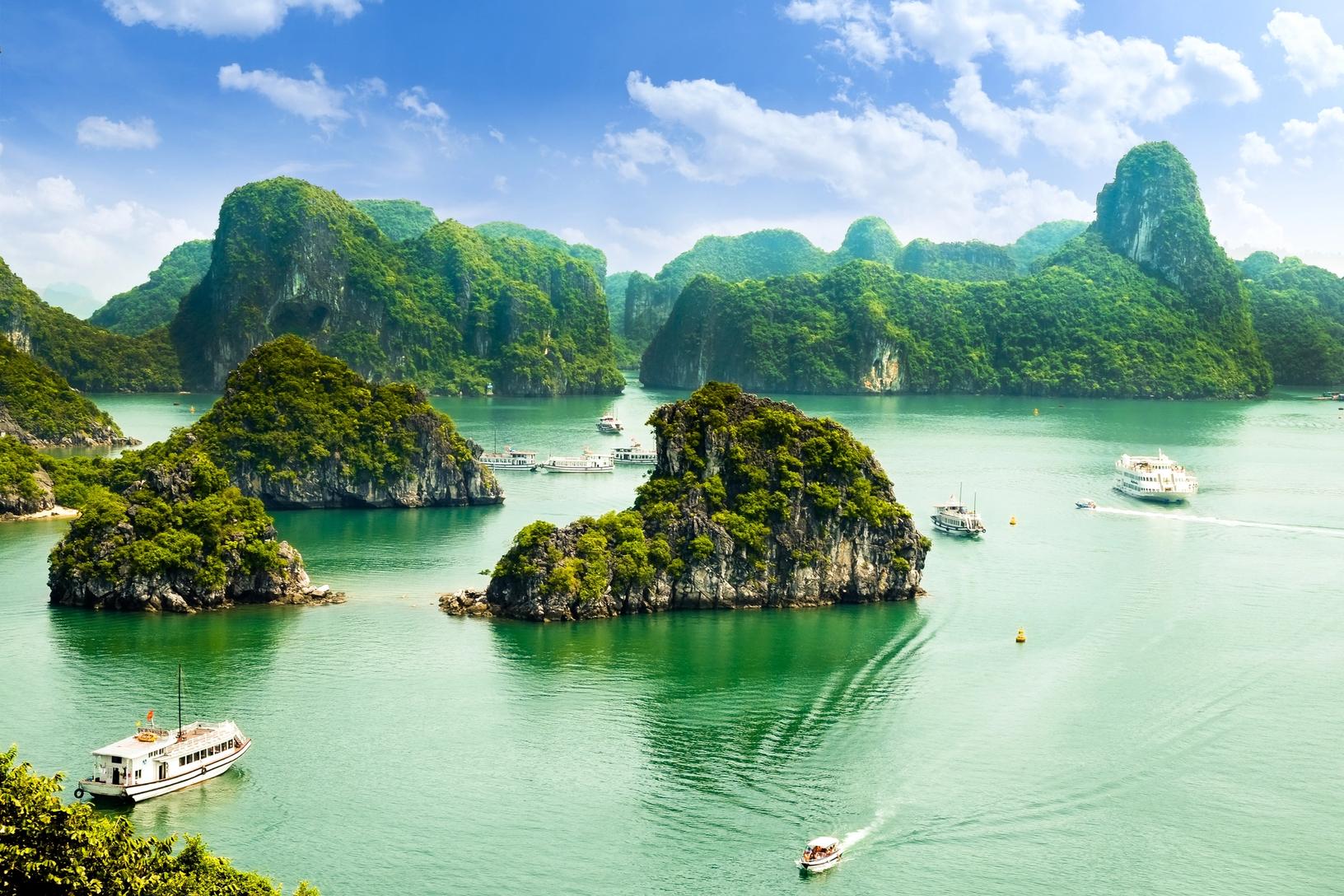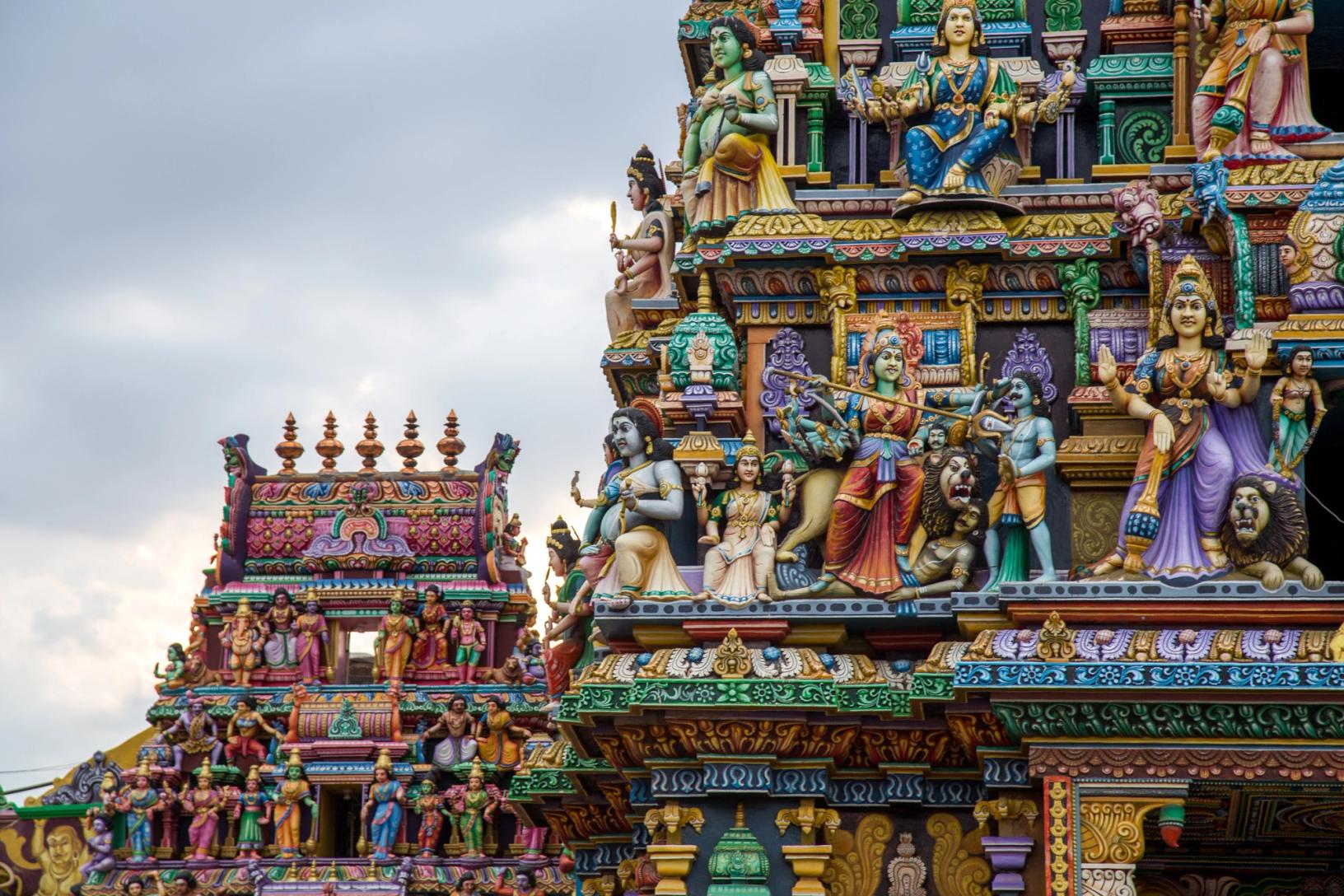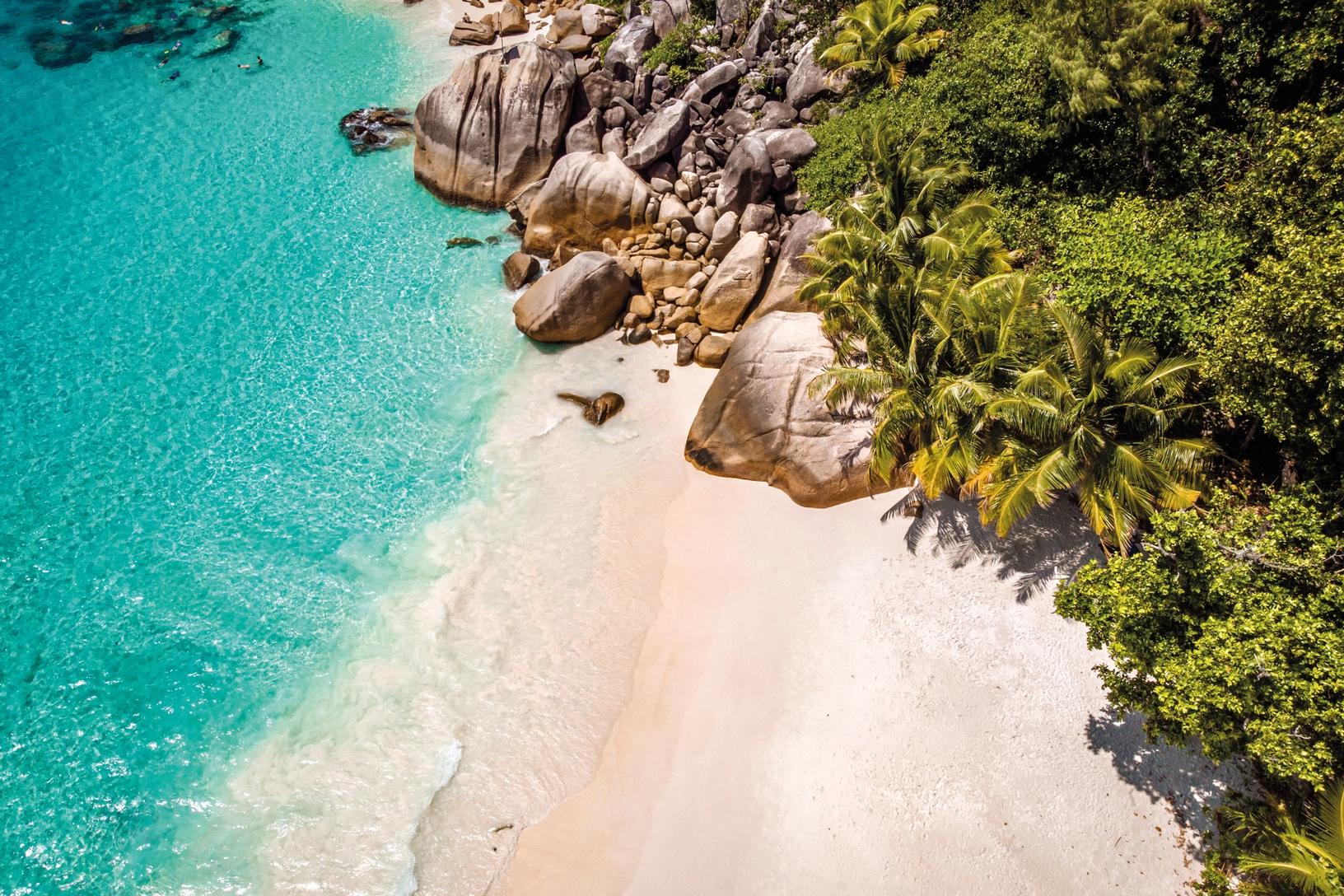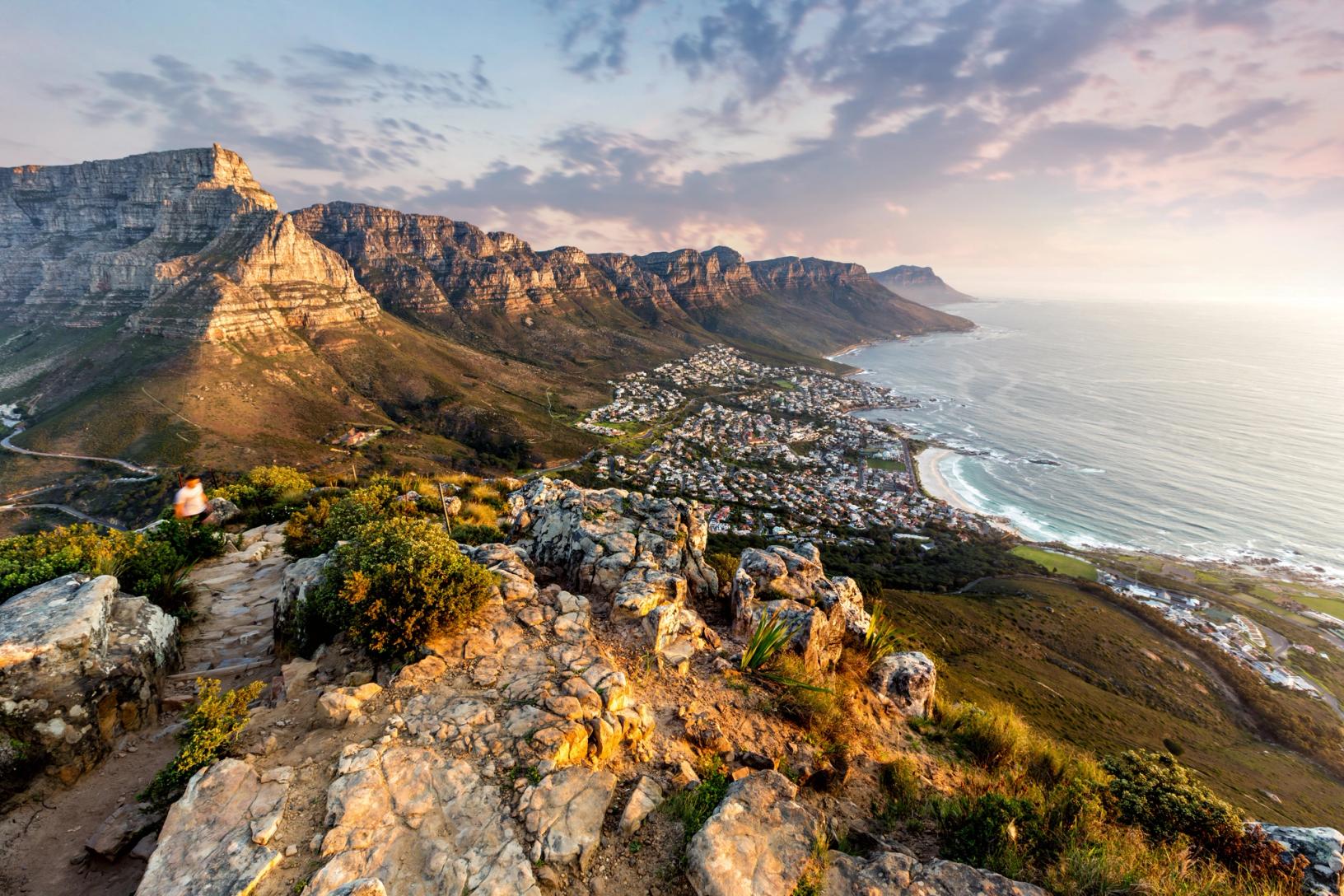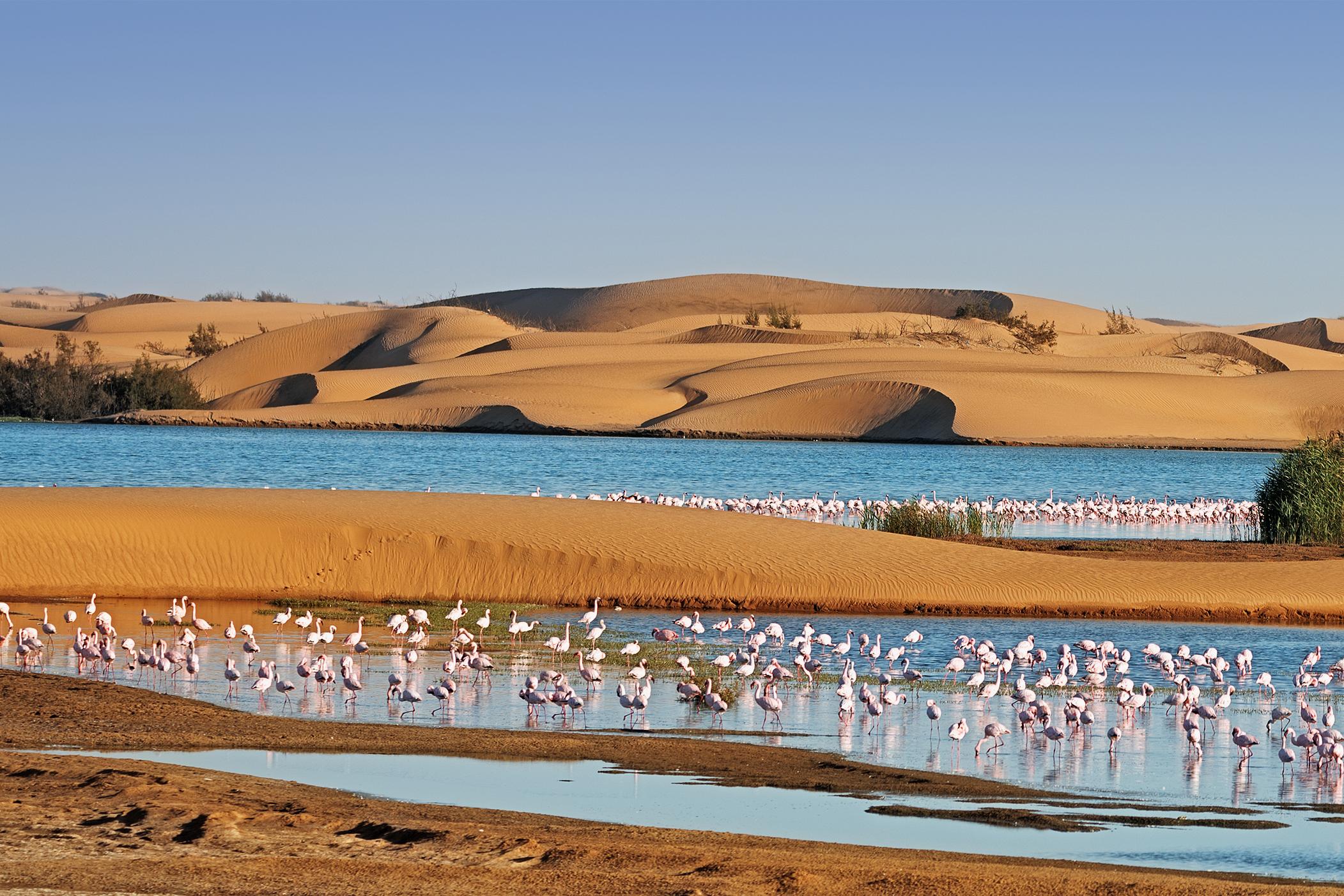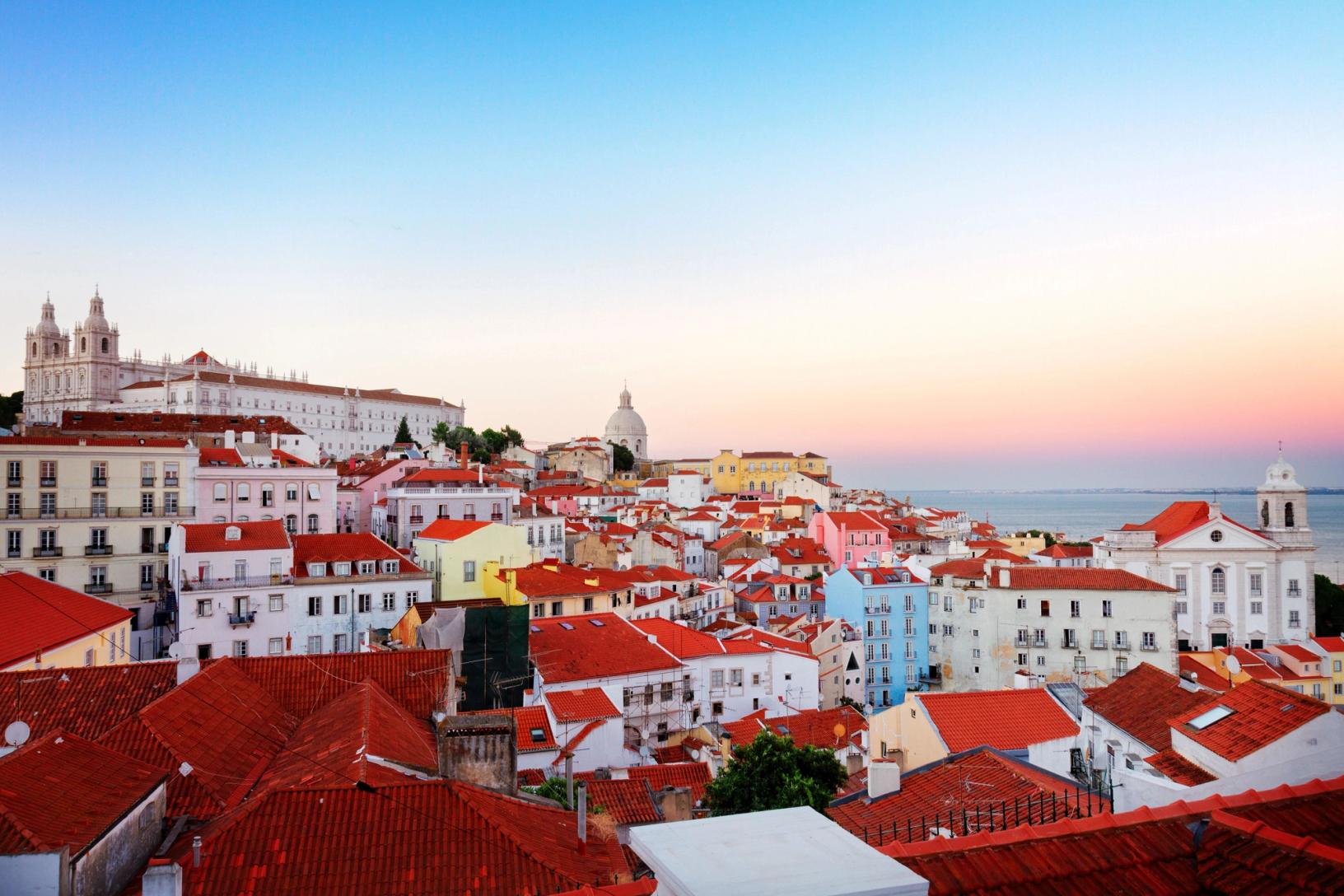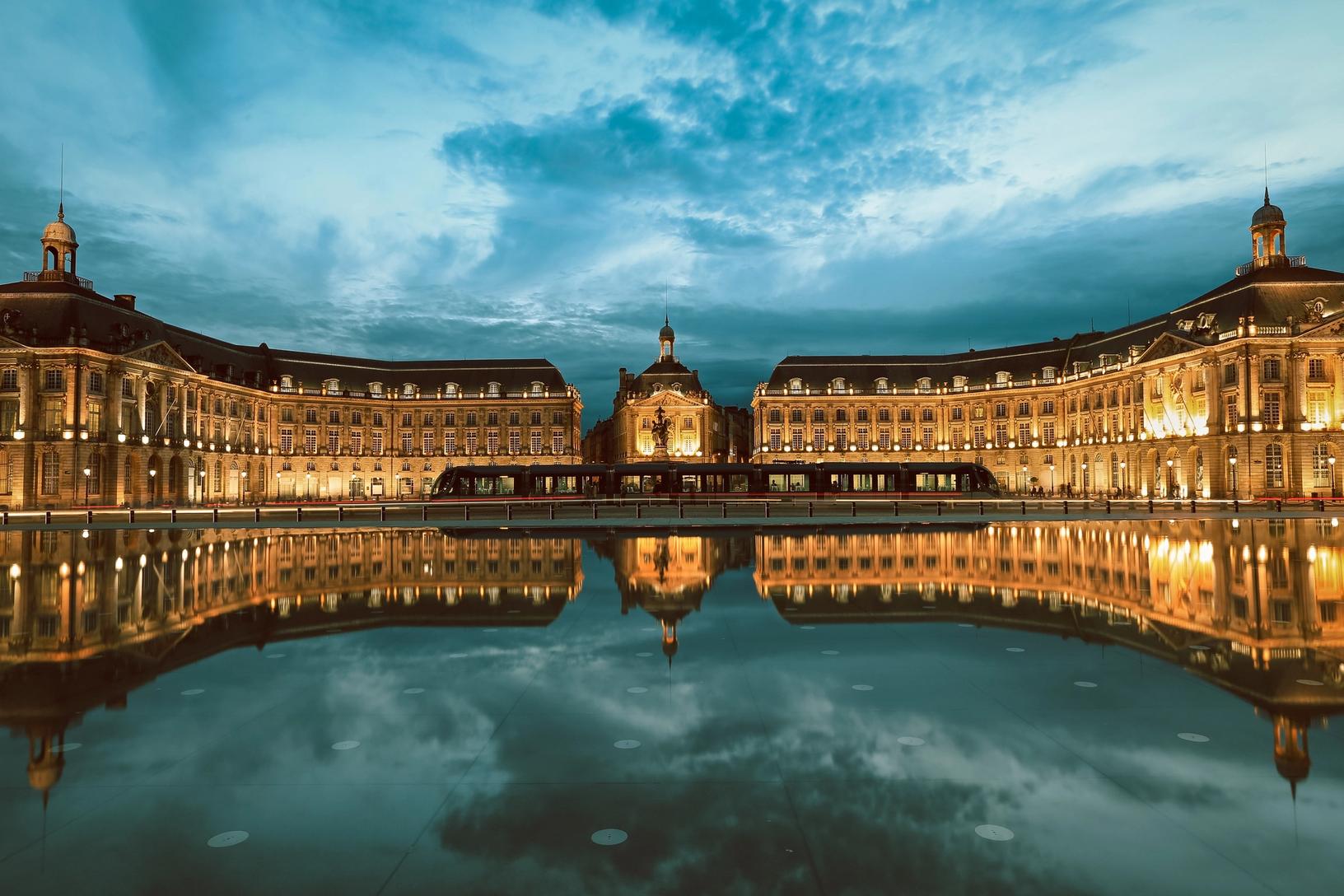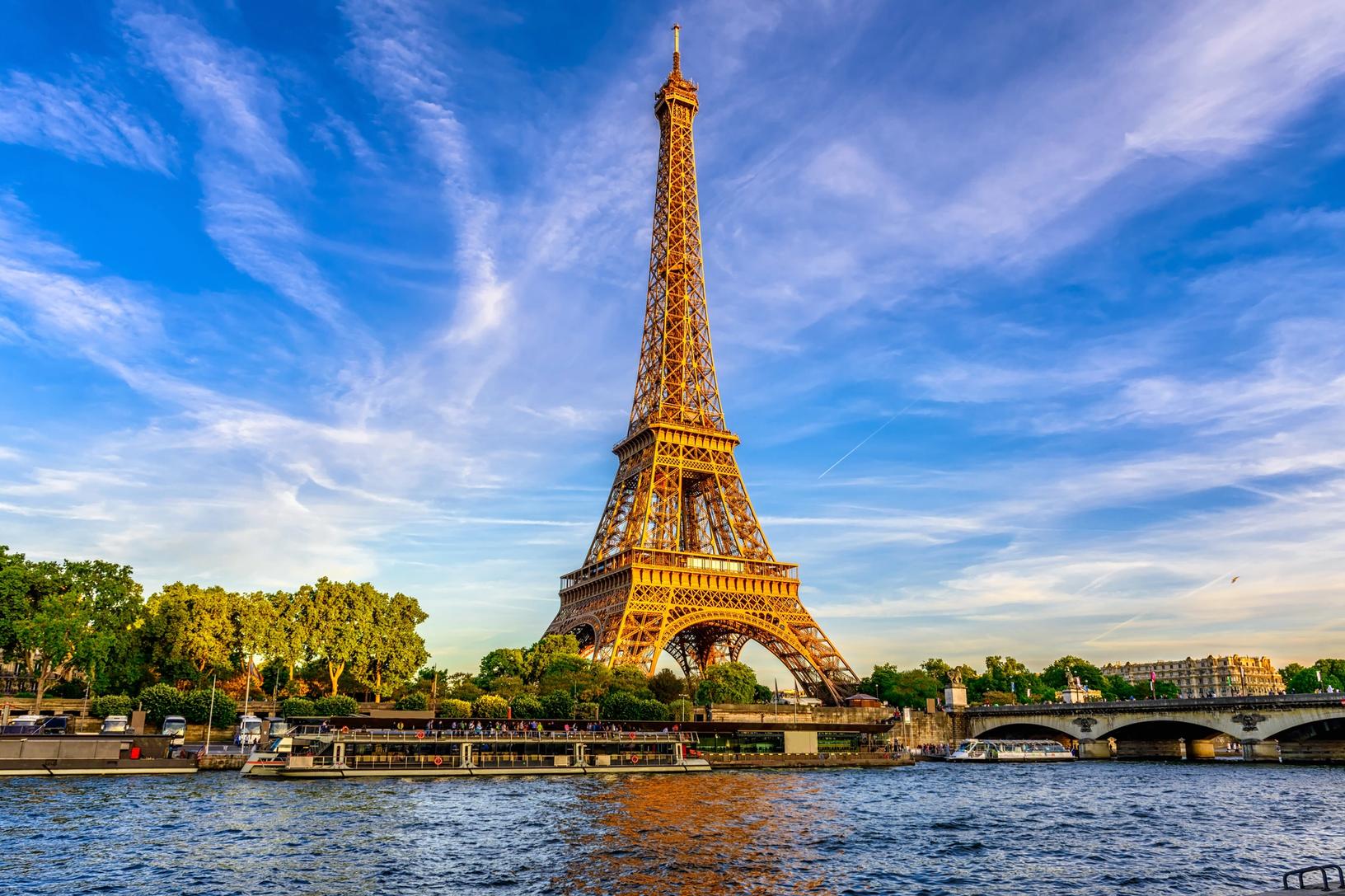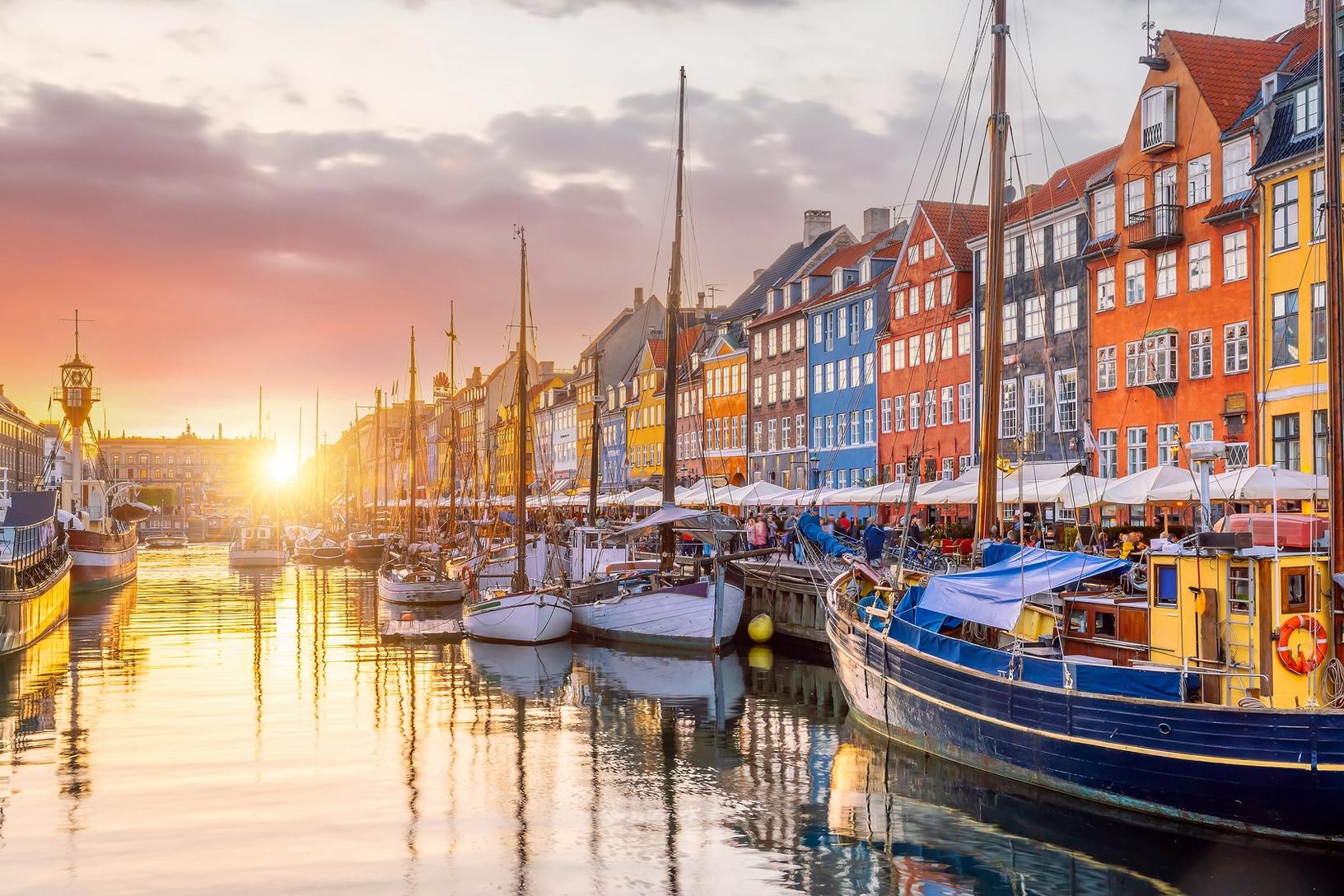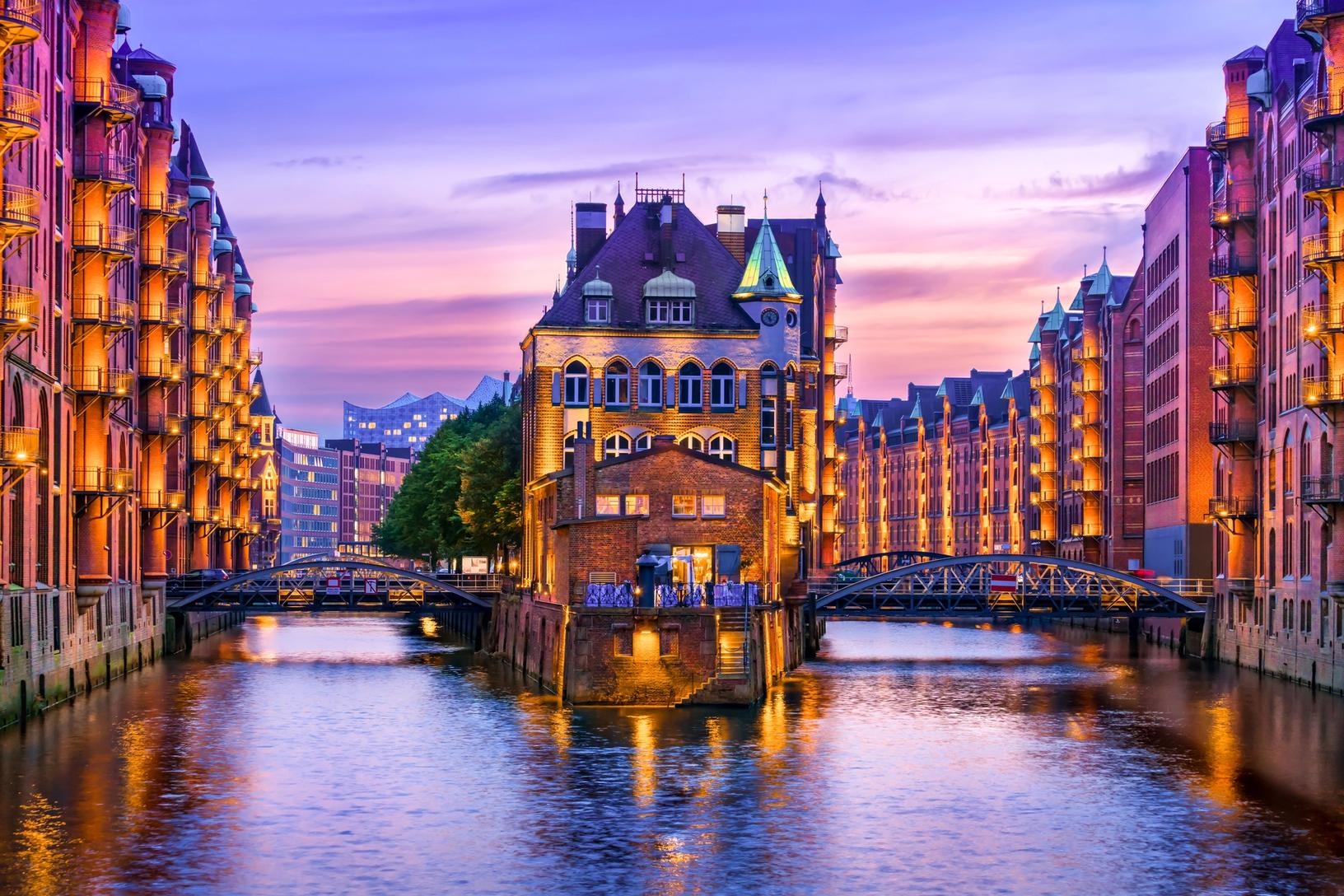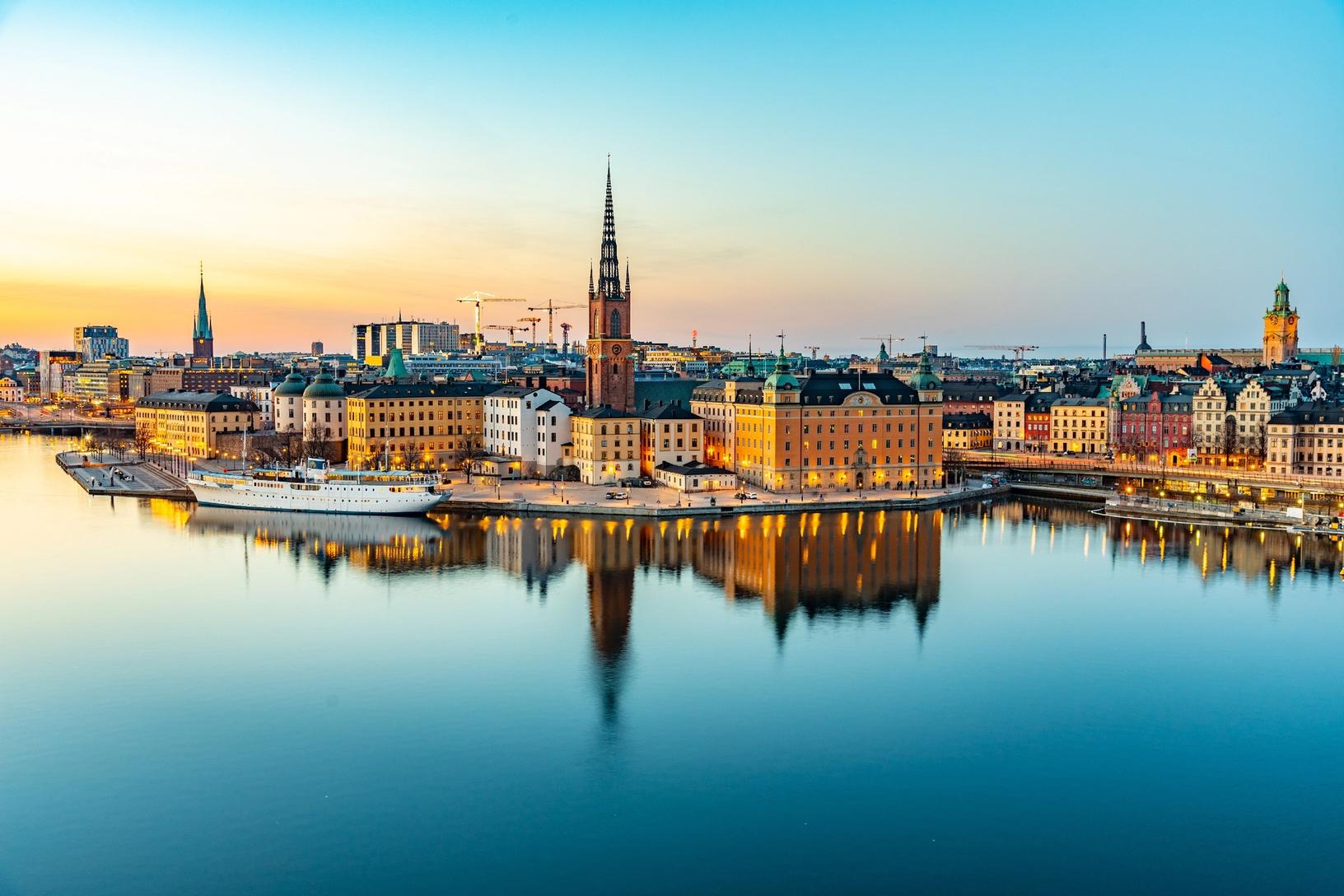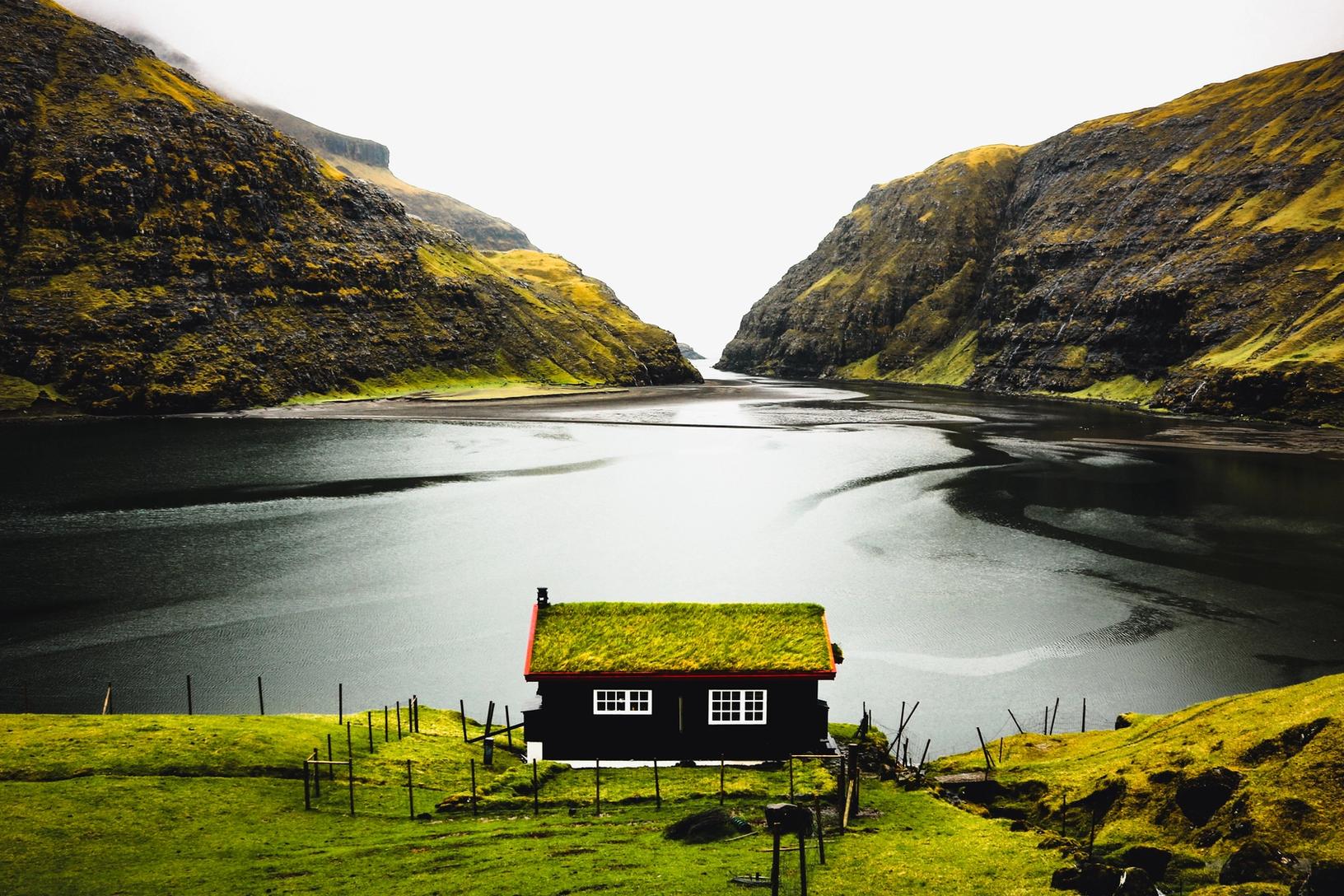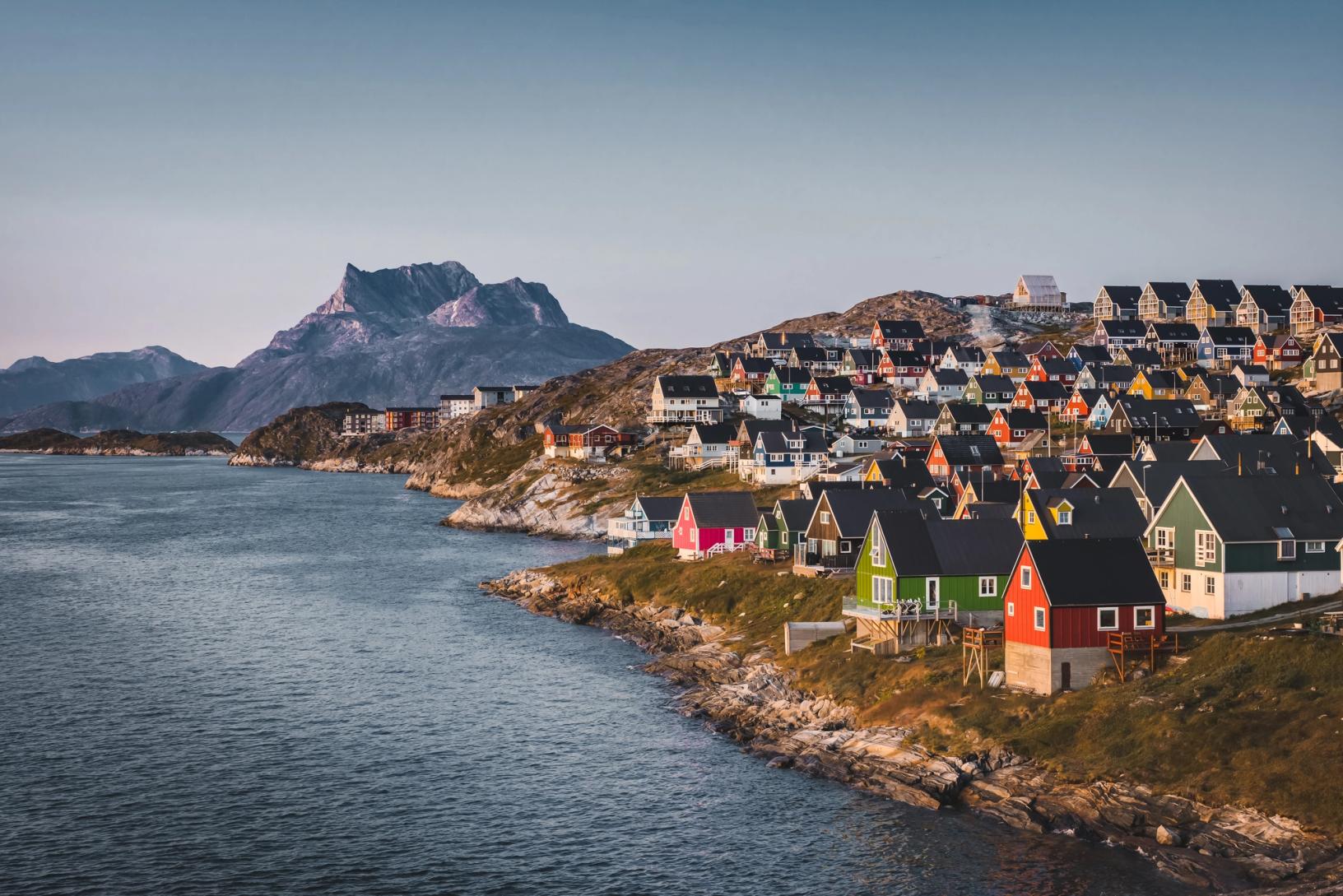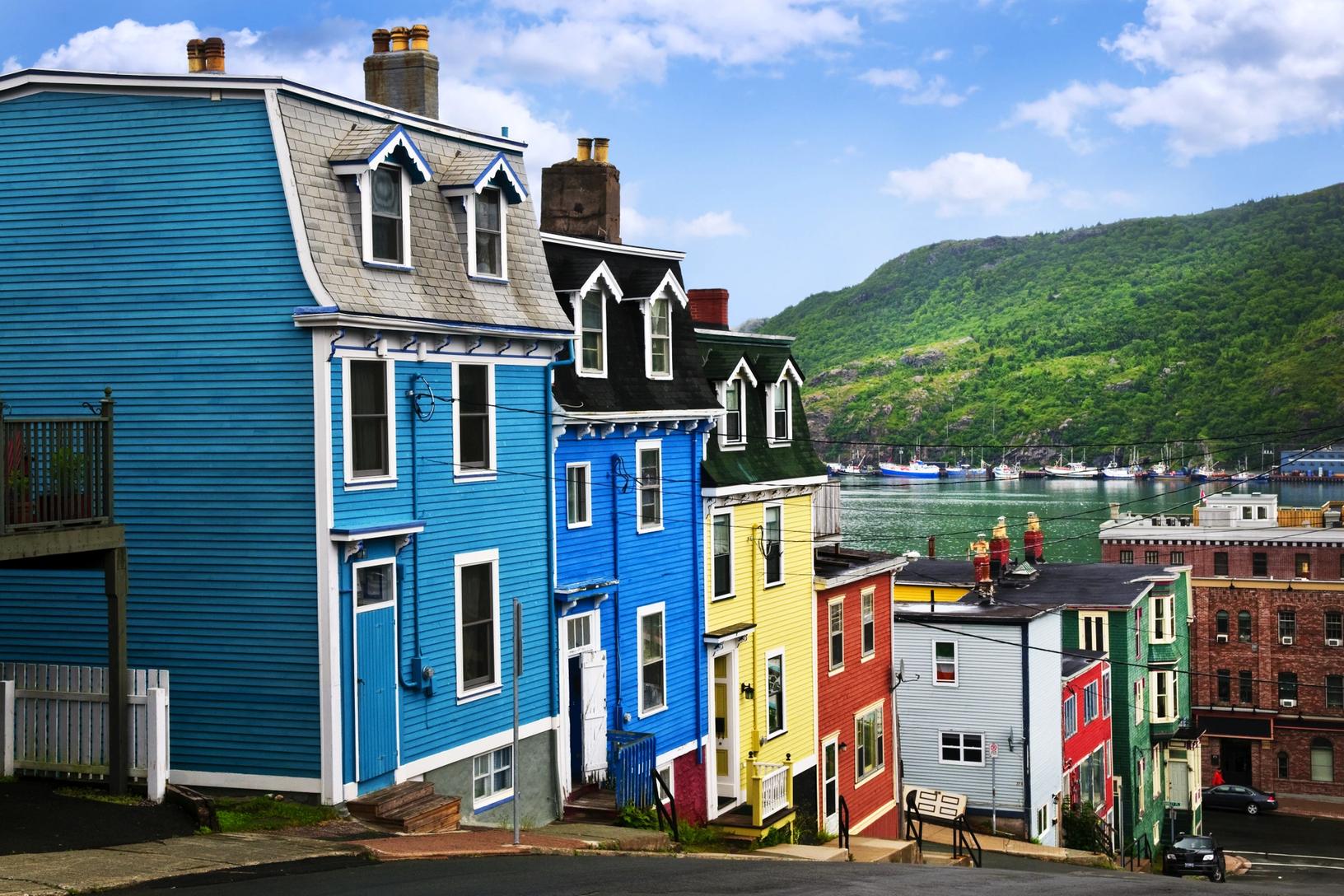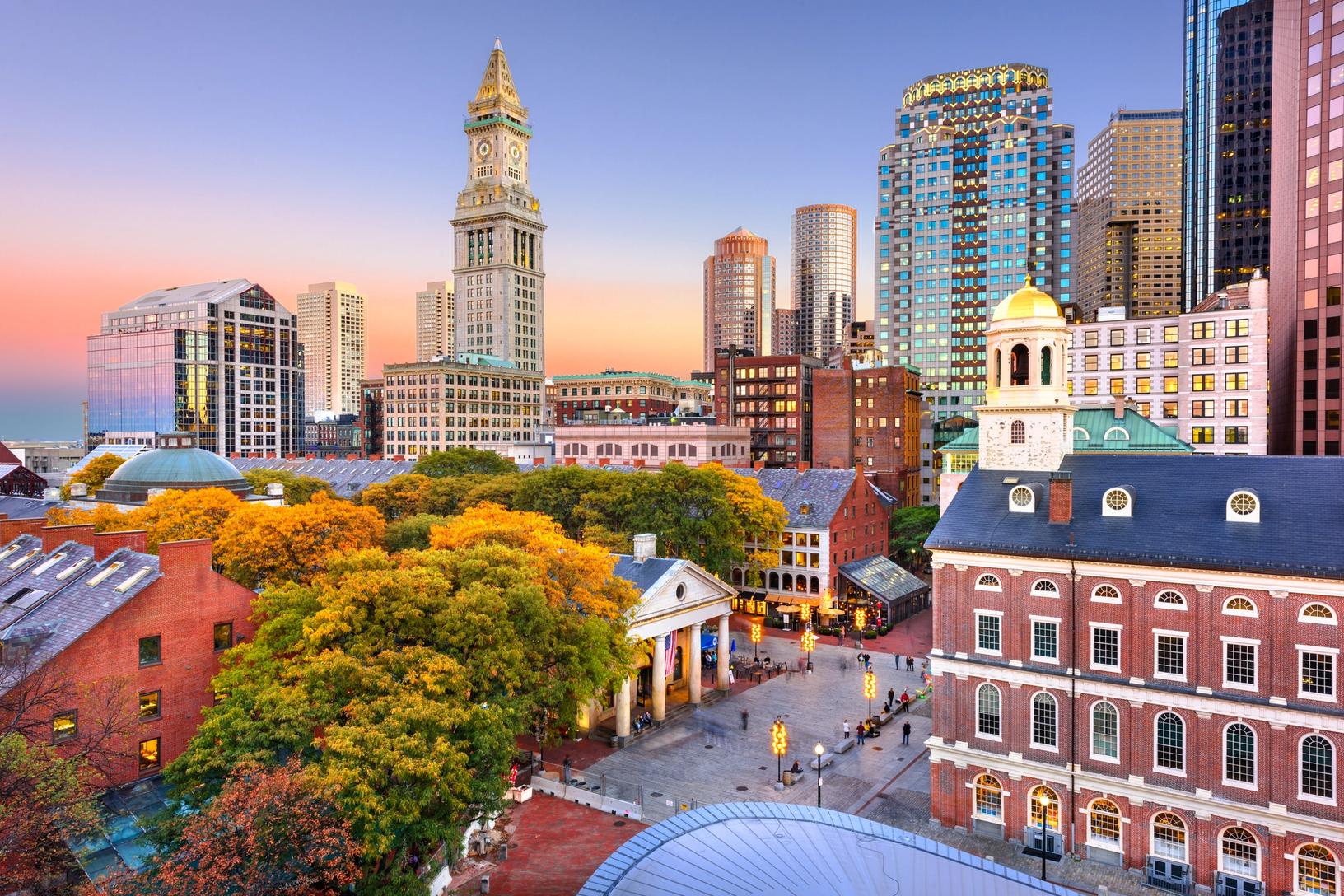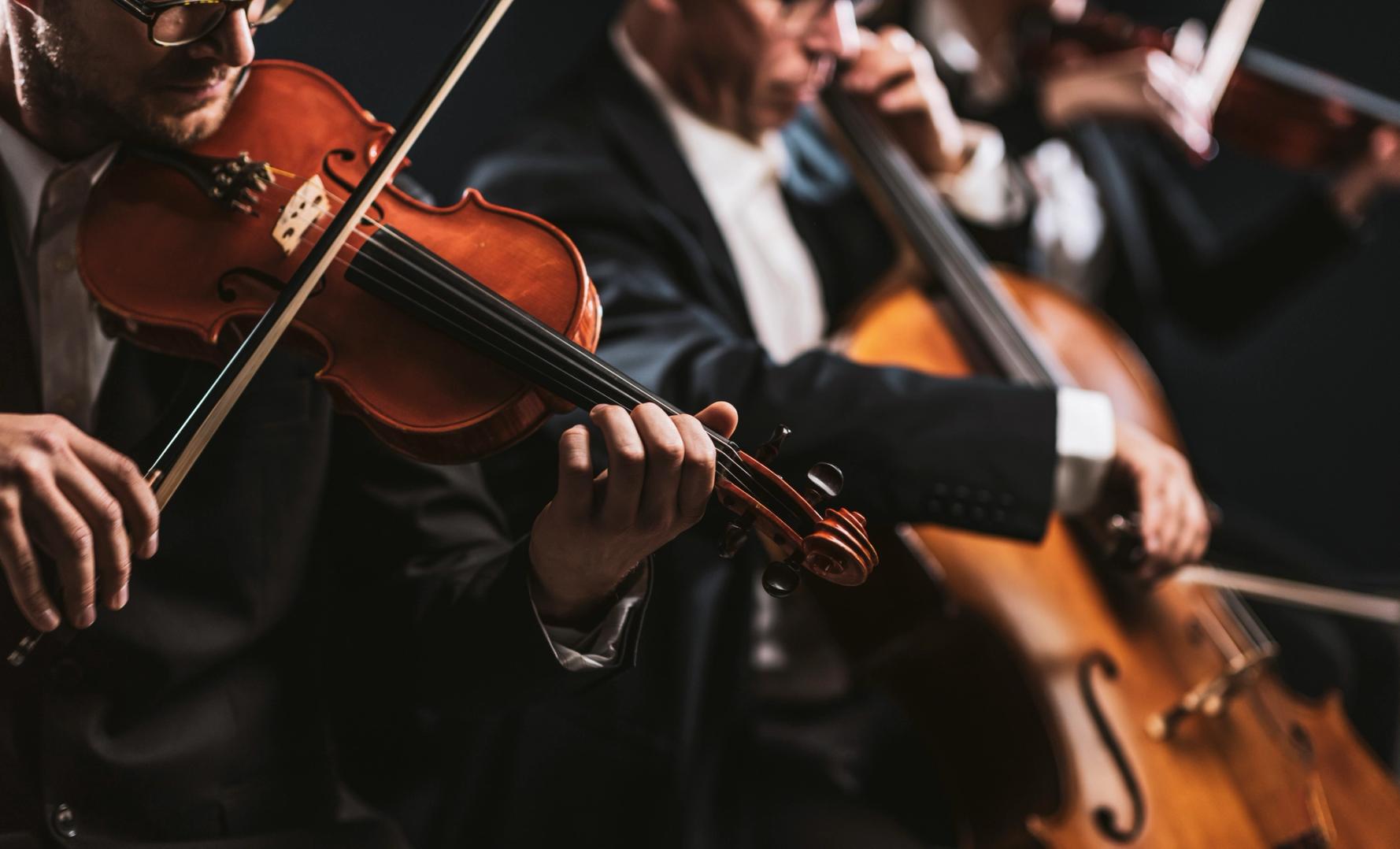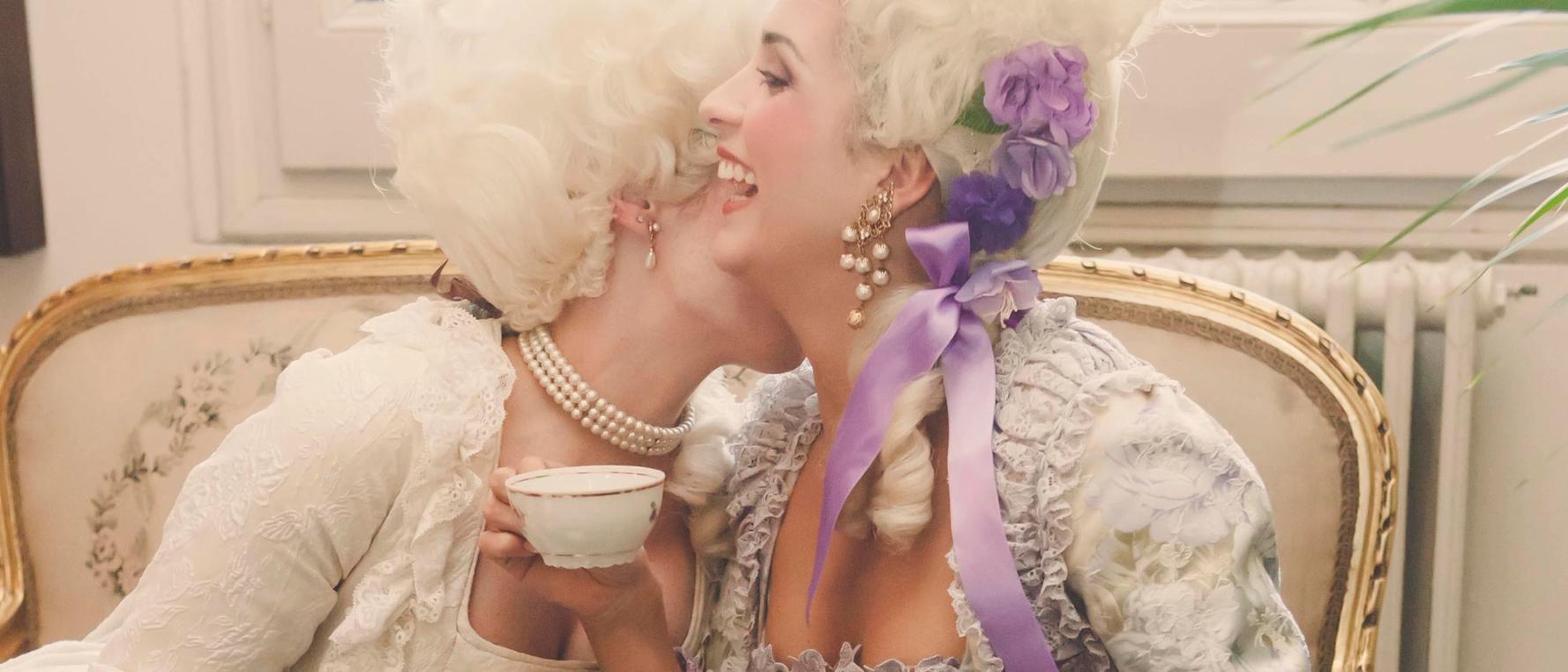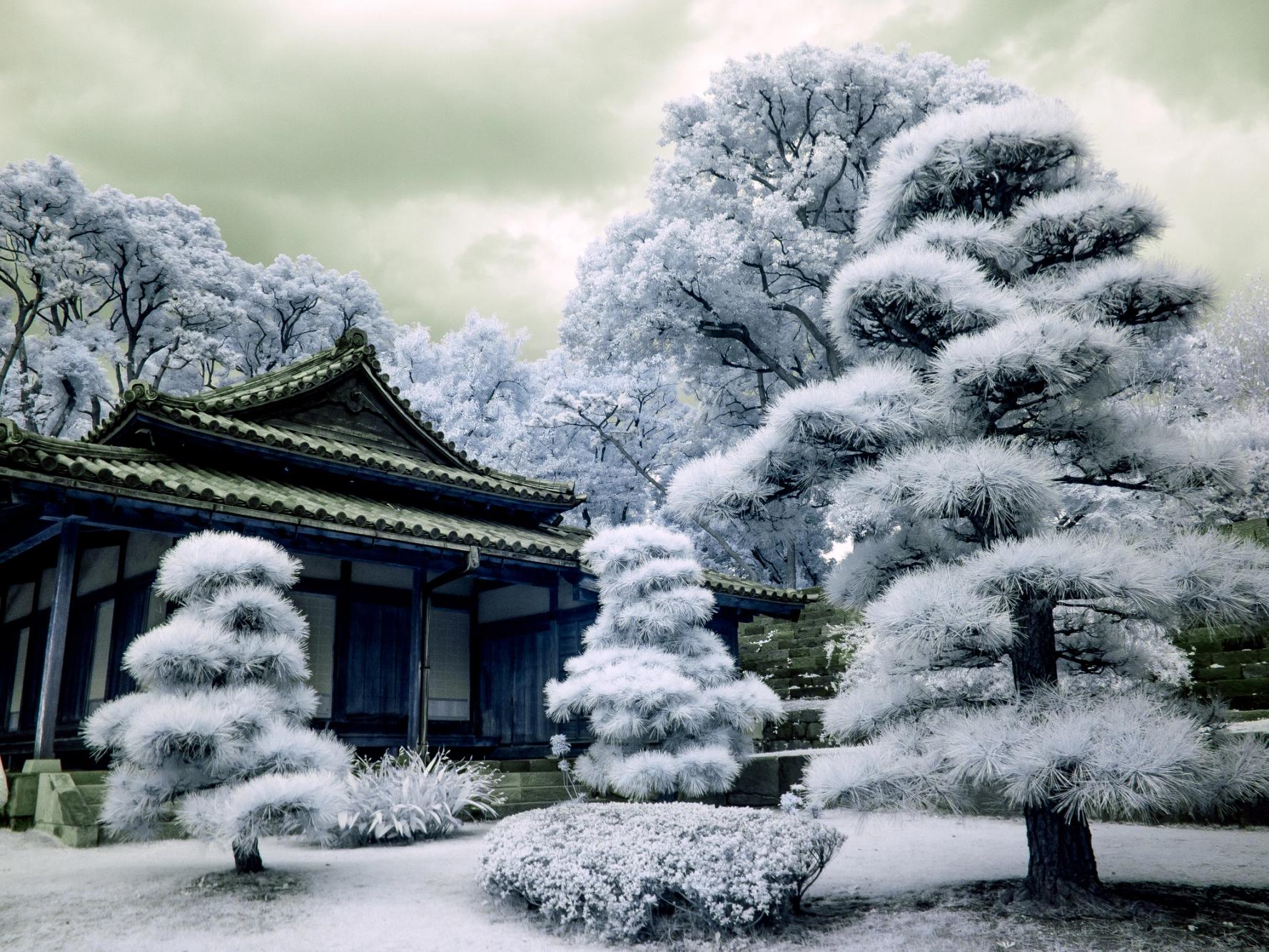
Images
Photo of the Day – The Royal Square, Maidan Naghsh-e Jahan
Image
When the Shah Abbas built the Royal Square, he centralized power within that Square. He gathered the 3 main components; “the clergy” with 2 mosques in the square, “the merchants” in the Imperial Bazaar, and “the government” – Shah himself, residing in the Ali Qapu Palace on the west edge of the grounds.
The mosque on the southside of the square was originally named the Shah’s Mosque, now is the Imam Mosque. The port of the mosque is a half-dome that measures 89 feet and is covered with mosiacs. The entrance is bound by two 171 ft. turquoise minarets. The vaulted hall leads to the interior courtyard.
The Royal Square did not face Mecca. The architects of the mosque had to create an interior courtyard which allows for a right turn to orient the mosque to Mecca, a northeast/southeast position . The entrance faces the square, the mosque behind it faces Mecca.
The interiors are completely covered with enamel tiles, many with the 7 color Persian design. They show the Persians poetic passion for flowers.
The Sheikh Loyfollah Mosque, on the east side of the square, was actually the first to be built. Shah Abbas needed a place for private meditation for the Royal Court. There are no minarets, and it’s much smaller in size.
There is a recessed half-domed, tiled gateway like the Imperial Bazaar and the Imam Mosque.
However, the interiors are made of very fine materials. One unique chacteristic of the mosque is the peacock at the center dome – to see the peacock, check out the next zoomed-in photo!!!
Zoomed-in picture of the dome showing a peacock in the center. Realizing the detailed tile work that you can’t see with the naked eye is amazing!
To keep the royal family protected as they went from the Al Qapu Palace to the mosque, a tunnel was made under the Royal Square. Guards were posted at the doors and in the tunnel. The public was never allowed in the mosque until recently.
The Ali Qapu Palace is more of a gateway to the royal gardens behind it than an official palace. The Shah built this palace for entertainment. The 6th floor was or portico was for viewing polo matches, military parades and other activites in the square.
The best skybox in Isfahan!
Roof top terrace
Roof top terrace pool
The 7th floor was the music room with a very intrique ceiling, designed for acoustics. Built in the 17th century!
Imperial Bazaar is the fourth of the ….
Shopping for Spices
Everything!!!
Photo of the Day – Isfahan, the Oasis of Central Iran
Image
John loved the gardens of Isfahan. There are wide green parks on both sides of the Zayandeh (life-giving) River which runs through the city. To learn that the planning of these parks dates back to the 17 century is quite amazing.
Abbas Shah moved the capital of the Persian Empire to Isfahan in a effort to provide security and to be closer to the Persian Gulf, which was becoming important trade route.This river city isolated Isfahan from enemies and created an “oasis” for important trade routes for the entire world.
Today the river and gardens create a green space for the all the people of Isfahan. Many fill the benches that are placed among the flowers and trees.
There are wonderful bridges throughout the city. The most famous and the longest is Sio-Seh Pol, meaning 33 Pier Arches. It was opened for use in 1602.
Our tour spent 3 full days in Isfahan, and we were so glad!!! It was a beautiful, friendly place to be. The shopping, the mosques, the hammans, and palaces were the best!!! Our favorite places were the Khaju Bridge/Dam and the grand Maidan-e-Naghsh-e-Jahan Square.
The Najhsh-e-Jahan Square is one of the largest city squares in the world. It’s an outstanding example of Iranian and Islamic architecture, a World Heritage Site.
At one time the center green space of this city square was a polo field. The King and his family sat in the viewing stand on the right side, called the Ali Qapu Palace. These polo matches (chow gan) were very popular and the King entertained at the palace during these games.
The Maidan Square is also the home of two impressive mosques, Sheikh Lotfollah and the Shah Mosque, also called the Imam Mosque (after 1997 Revolution). These mosques were covered with a special mosiac tile of 7 colors. Beautiful Arabic writing was also part of the designs of the mosques.
Opposite the Imam Mosque is the entrance to the Imperial Bazaar. The two story design of the shops enclosed the entire Maidan Square. A Shoppers Paradise!!!
Photo of the Day – Jameh Mosque at Sunset, Yazd
Image
Jameh, also called the “Friday Mosque”, is an example of Azari style architecture. Yadz is an important center of Persian style architecture. Jameh has a tall entrance to the mosque and a very large open courtyard in the center of the mosque. Jameh is open to the entire community for Friday prayers.
The mosque is covered with Persian mosiacs and mostly blue tiles. The pair of matching minarets are the highest in Iran. The skyline at night is beautiful!
Dinner was at terrace restaurant that gave us some wonderful views of the Yadz night lights! This is the Amir Chakmag Complex, in the center of Yadz.
Here is the spectacular view in the evening.
Water Museum is a MUST SEE in Yadz. Because of high temperatures, underground tunnels were used to bring the mountain water to the city of Yadz.
The mountains were 20 km away from Yadz. It was an engineering feat to develop these canals or quants, as they are called. It made living in the desert possible.
The canals were gently sloping to provide water throughout the city. This canal is 60 feet under the ground at the Water Museum.
Photo of the Day – Yadz, the Desert City
Image
Yazd is in central Iran. At one time, Yazd was an important station on the Silk Road, with historic mosques, minarets and ancient clay buildings. Marco Polo described Yazd as “a good and noble city with a great amount of trade.” The deserts have kept Yadz isolated from invading armies, so we are very lucky that most of it’s ancient buildings have been preserved.
It’s Old Town is built entirely out of adobe and is a maze of endless alleys and very narrow streets. It all looked very brown, but it was very clean.
Beautiful to see after dusk and through out the evening. Our guide’s home was Yadz and he showed us the Yazd that he loves.
Yazd is known for being the center of Zoroastrin religion. They believe there is one universal god. In Zoroastrianism water and fire are agents of ritual purity. Both fire and water are considered life sustaining and are represented at the “Fire Temple”.
Zoroastrians usually pray in the presence of some form of fire (any source of light). Fire is considered the medium through which insight and wisdom is gained. Water is considered the source of that wisdom. This eternal flame – Ataskadeh, is in a brazen pot and behind a wall of glass. It has been burning since 470 B.C.
The Symbolic Birdman above the “Fire Temple” is the winged symbol of Zoroaster and named Farahr meaning “guardian angel”. His wings have three rows of feathers representing “Good Thoughts, Good Words, and Good Deeds”, the basis of Zoroastrian ethics.

Symbol of Zoroastra
The tradition of the Zoroastrians was to leave the bodies of their dead exposed to sun and birds of prey on this hill. They believed this would protect the soil from being polluted by burial of the dead, and the air to be protected from burning the bodies, The “Towers of Silence” are outside the city limits. There are two hills with circular walls built around the tops.
Best Sweets in Yazd – “Haj Khalifeh Ali Rahbar Partners” is located at the corner of the main square. Baghlava, ghotals, pashmak. Confectioneries have a long history in Yazd. Sweets are various and divine, with hidden flavors of rose-water, pistachio and almonds.
This store, Haj Khalifeh Ali Rahbar Partners, was wall to wall customers! You had to get a number to be served!
Most people in our tour left with packages to bring home to friends and relatives. Our guide bought enough cookies for the bus to last us for days and days…..
Photo of the Day – The Azadi Tower
Image
Most travelers drive past this “Freedom Tower” on their way into Tehran. Originally built in 1971, it was part of the cultural complex named the King Memorial. Several fountains and gardens are around the base and there is a museum underground. We made a photo stop here on our way to the domestic airport.
Tehran Bazaar was especially busy this Friday afternoon. Tomorrow is Father’s Day in Iran. Just like our Father’s Day, you would buy a present for fathers and grandfathers. The difference was all men were to be honored and celebrated. So you would buy presents for all the men in your life!!! Lots of presents to buy!
These two young guys were ready to celebrate “Men’s Day” and wanted Americans to take their photos! Please!
Would flowers would make a good present for an Iranian man? Our guide, a young man himself, thought that was good!
A gift of nuts and dried fuits would be very welcome! Great presents already in boxes for the men tomorrow.
Spices and dried foods were piled high throughout the bazaar. Wonderful colors and so fragrant! Beautiful to see!
There is no shortage of clothing at the Tehran Bazaar! Big, small, short or tall – you could find everything for everybody here!
Lots and lots of sandals…. With the coming of summer, everyone was in the market for new sandals. In all colors!
Some special occasion dishes. Most of this bazaar is for locals and everyday needs. But there are souvenirs, too!
Some beautiful artwork to take home! The Iranians make many, many lovely things to bring home for friends and family.
Photo of the Day – Sa’d Abad Complex Part 2
Image
The White Palace – Palace of the Nation, built in 1931 and 1937, served as the Pahlavi’s Summer Residence. Little has changed since the 1979 Revolution.
This is a 54 room, very modern building, that provided the most luxurious life style available at the time.
The carpet in the Reception Hall is said to be one of the largest carpets ever woven in Iran, 143 sq. metres.
The residence was often used to entertain foreign diplomats for State Dinners. This dining room carpet matched the reception hall. 
The lower level of the White Palace is the Nation’s Art Museum. There is a double spiral staircase with walls made of stainless steel. The museum is a collection from 20th century Iranian artists along with a Modigilani, a Picasso, an Andy Warhol valued at $100s of millions.
Outside the Palace steps are bronze boots. It’s all that’s left of Mohammed Reza Shah’s statue that stood here before the Revolution.
Photo of the Day – The Sa’ad Abad Complex Part 1
Image
This park and palace complex was first developed by the Qajar monarches and royal family in the 19th century. After the 1979 Revolution it became a museum.
Today there are 18 large and small palaces, each with it’s own architecture and technique. The compounds were expanded when Reza Shah lived here in the 1920’s and his son, Mohammad Reza Pahlavi moved here with his family in the 1970’s.
The compound is north of the city. It sits on 257 acres of spectacular parkland at the foothills of the Alborz Mountains.
100s of cypress and aspen tress provide shade to the grounds and beautiful flower gardens decorate the palaces.
The Green Palace is a classical-looking building from the end of the Qajar era. It is named for the facade of green marble from Isfahan.
Sandy’s first request for a photo with a lovely Iranian lady. Iranians were very friendly to our group. Taking lots of photos!
The Pahlavis Dynasty made major renovations in the 1930s, adding mirror marquetry everywhere. One hallway became know as the Mirror Hall.
The bedroom walls and ceilings were covered with mirrors, too!
The Shah’s office, sitting areas and dining room were filled with fine European furnishings.
The Green Palace was often used for State Dinners enteraining foreign diplomats from all over the world.
All meals were prepared in a seperate Culinary Building. It was filled with all the most up-to-date kitchen equipment.
The display was complete with faux food and life-sized chefs. Easy to imagine how the preparations for 100’s could be completed here, then rushed to the Palace.
Photo of the Day – Golestan Palace, Tehran
Image
The oldest of the historic monuments in Tehran, the Golestan Palace, is the result of 400 years of construction and renovation. After Nasser-ol-Din’s visit to Europe in 1865, he wanted to create a palace better than Versailles, the Louvre, Peterhof or Windsor.
A spectacular terrace was made by order of Shah Qajar in 1806.
The throne that exists today is in the middle of that terrace. It is made of famous yellow marble from Yadz province. The throne was made of sixty-five pieces of this beautiful colored marble.
The throne that exists today is in the middle of that terrace. It is made of famous yellow marble from Yadz province. The throne was made of sixty-five pieces of this beautiful colored marble.
The Hall of Mirror is the most famous of the Palace Halls. This relatively small hallway has extraordinary mirror work.
Not as long a hallway, but is more spectacular than Versaille’s Hall of Mirrors.
During the Pahlavi era, 1925-1979, the Palace was used for formal royal receptions. The most important ceremonies were the coronation of Reza Kalm 1925 and coronation of his son, the former Shah of Iran in 1941, who was deposed in 1979.
Golestan means “Rose Garden”. The Palace is built around a garden featuring pools and planted areas with beds of roses.
The Palace and Gardens are currently under major renovations. Few rooms are open to the public, but they are worth a visit.
More beautiful tile work….
rose garden tiles
Photo of the Day – Tehran, Iran
Image
We are lucky to be among the few Americans who have visited Iran during the past 5 years! With nuclear negotiations making headlines every day, what would we see in this country? Beautiful palaces, mosques and tree lined boulevards. 6 cities that were clean and green, with people who loved Americans.
The Houston World Affairs Council offered an educational trip to Iran, visiting major cities and historical sights. Our itinerary was Tehran, Yazd, Isfahan, Kashan, Ohm, Shiraz, Persepolis and Tehran. 14 curious travelers joined us on 5 bustrips and 3 domestic flights to see this mysterious country.
There was a shady green park across from our hotel. After a full day of travel, the exercise was welcomed. So we walked and we walked.
All these trees and parks were watered with irrigation regulated throughout the city. There were beautiful fountains were found throughout the city. From the center of traffic round-abouts to the numerous city parks.
Some of the water was in canals that ran through the city. The benches along these waterways were full of people enjoying the outdoors.
Everyone loved seeing the “countdown
On the sidewalks there were 2 of these donation boxes for the “poor” in each block. It kept you very aware of helping people in need.
A MUST – SEE for all visitors to Iran is the Carpet Museum or at the very least, a store that demonstrates how Persian rugs are made. Rugs are very important to Iranian art and culture. Carpet weaving goes back to 5th century B.C. The traditional Persian carpet is tied with a single looping knot which allows for a finer quality of work. Today, Iran is the largest producer and exporter of handmade carpets.
Visit to the Contemporary Arts Museum in Tehran
An Iranian with connections in Texas – his brother is a professor at UT Austin. He was working at the museum gift shop!!! He loves America!
All women wore scarves to respect an Islamic tradition. It wasn’t hard to do. There were millions of scarves – in every color and every design.
Agha Bororz Restaurant – our first lunch in Tehran
There was a real effort for us to try a variety of Iranian culinary dishes… but we ate a lot of kebobs. Kebobs for lunch, kebobs for dinner.
Hookas
Photo of the Day – Wines of Cappadocia and Cave Hotels
Image
Volcanic mineral-rich soil makes this Turkey’s prime grape-growing region and supports many productive wineries.
Cappadocia is one of the world’s oldest wine industries stretching back to the Hittites. Archaelogical evidence proves that winemaking dates back to 1800 B.C. Classifications were created and wine was exported to Assyria and Sumeria.
Kocabag is considered a boutique local label. This is a family owned wine producer. In 1986, the first bottle of wine was available on the market . In today’s wine sector, Kopcabag is considered one of the top 5 wineries in Turkey. Now more than 700,000 bottles are produced each year. Some are now available on the market in USA.
Cappadocia is actually a region not a city. Our hotel, The Fresco Cave Suites and Mansions, is in the ancient district of Konaklari or Temenni Hill. The town is Urgup in Neveshir. Sounds complicated… but not if you’re from Turkey!
There are 17 cave-rooms at the Fresco. Each features original frecoes dating back to the 19th century of the Ottoman period. Ours’ was the Big Arch Cave Suite, which consists of magnificent arches and a cave bathroom. Unique patterns on are formed by the cooling down of volcanic ash that were layered, creating swirls like a painting by a master painter.
The terraces of the Fresco provide beautiful views of Erciyes Mountain in the distance. Erciyes, the tallest volcano in the region, was one of three ancient volcanos that erupted 9 – 3 million years ago. Today it is always covered with snow.
“The Museum” is a premier hotel in Cappadocia. We were not able to get a room. If you can – book ahead! It’s worth it!
